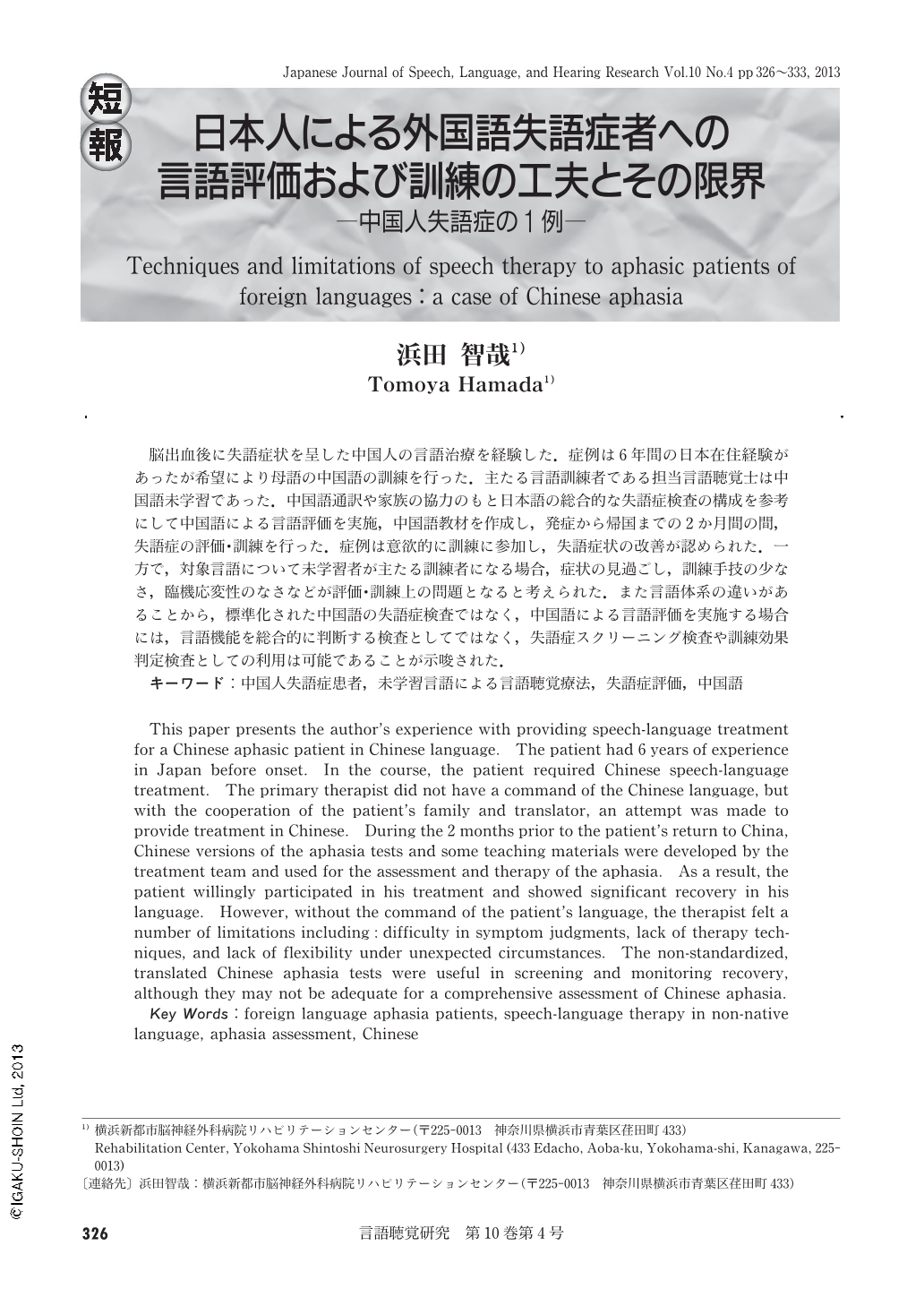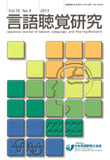Japanese
English
- 有料閲覧
- Abstract 文献概要
- 1ページ目 Look Inside
- 参考文献 Reference
- サイト内被引用 Cited by
脳出血後に失語症状を呈した中国人の言語治療を経験した.症例は6年間の日本在住経験があったが希望により母語の中国語の訓練を行った.主たる言語訓練者である担当言語聴覚士は中国語未学習であった.中国語通訳や家族の協力のもと日本語の総合的な失語症検査の構成を参考にして中国語による言語評価を実施,中国語教材を作成し,発症から帰国までの2か月間の間,失語症の評価・訓練を行った.症例は意欲的に訓練に参加し,失語症状の改善が認められた.一方で,対象言語について未学習者が主たる訓練者になる場合,症状の見過ごし,訓練手技の少なさ,臨機応変性のなさなどが評価・訓練上の問題となると考えられた.また言語体系の違いがあることから,標準化された中国語の失語症検査ではなく,中国語による言語評価を実施する場合には,言語機能を総合的に判断する検査としてではなく,失語症スクリーニング検査や訓練効果判定検査としての利用は可能であることが示唆された.
This paper presents the author's experience with providing speech-language treatment for a Chinese aphasic patient in Chinese language. The patient had 6 years of experience in Japan before onset. In the course, the patient required Chinese speech-language treatment. The primary therapist did not have a command of the Chinese language, but with the cooperation of the patient's family and translator, an attempt was made to provide treatment in Chinese. During the 2 months prior to the patient's return to China, Chinese versions of the aphasia tests and some teaching materials were developed by the treatment team and used for the assessment and therapy of the aphasia. As a result, the patient willingly participated in his treatment and showed significant recovery in his language. However, without the command of the patient's language, the therapist felt a number of limitations including:difficulty in symptom judgments, lack of therapy techniques, and lack of flexibility under unexpected circumstances. The non-standardized, translated Chinese aphasia tests were useful in screening and monitoring recovery, although they may not be adequate for a comprehensive assessment of Chinese aphasia.

Copyright © 2013, Japanese Association of Speech-Language-Hearing Therapists. All rights reserved.


